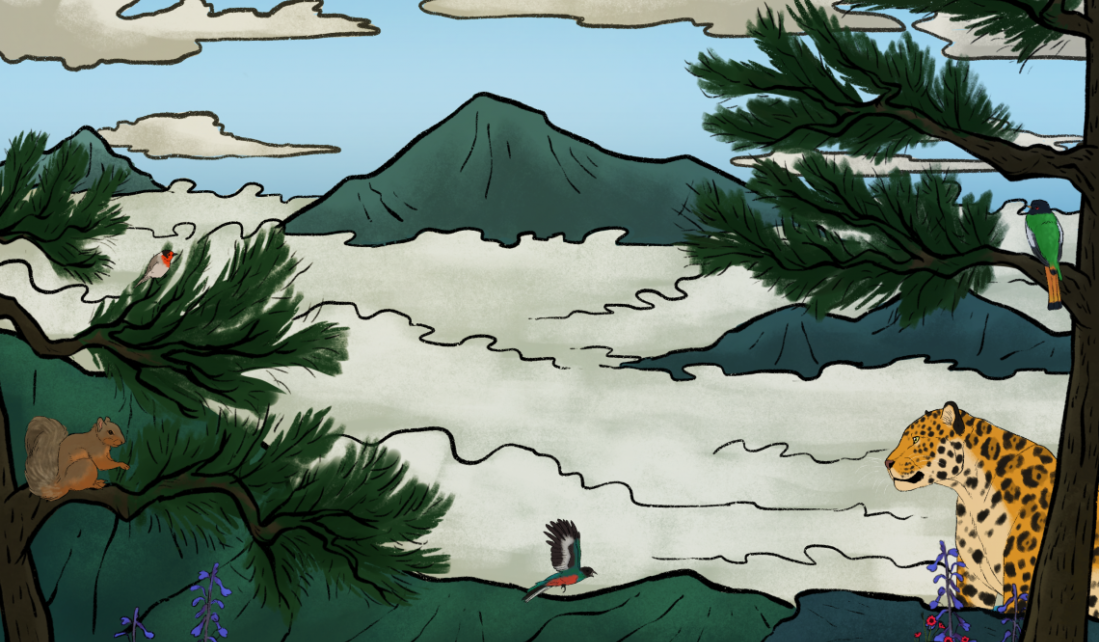In April, our Conservation Director Paulo Quadri had the pleasure of moderating the University of Arizona’s three-part webinar series on Sky Island biodiversity and conservation. Diverse panelists from different universities, nonprofits, research labs, and government agencies across the U.S. and Mexico joined to discuss the scientific work they’re doing to help protect and restore the Sky Island region on a transnational scale.
Each session consisted of three or four 10-minute presentations given by researchers around various topics, including the resilience of ecosystems to extreme climate events; the threatened forests and endemic squirrel species of the Sky Island region; the climate-driven extinction of Sky Island biogeography; and how climate has reversed tree growth patterns in tropical sub-alpine pine forests.
We are amazed at the work these ten panelists are doing in and around the region. Their research will support new and existing approaches to conversation and the challenges we face in the Sky Islands.

Credit: Sky Island biodiversity scene by the artist Maya R. Stahl.
If you’re interested in learning more, you can watch the three-part series and view most of the panelists’ PDF presentations on the University of Arizona’s Bridging Biodiversity and Conservation Science website.
However, if you’re short on time, here are a few takeaways from the first session to whet your appetite for later!
1. Three challenges currently threaten the biodiversity of the Sky Island region:
The ongoing climate crisis and subsequent acidification of the Southwestern U.S. and Northern Mexico; habitat fragmentation from urban development, border wall construction, mining, and other extractive industries; and the presence and growth of invasive species.
To address and overcome these challenges, we need to work together to set restoration goals for the Sky Islands, properly manage the region’s landscapes and ecosystems, establish and follow conservation priorities, and train/build capacity within NGOs, groups, agencies, and research centers.
2. Our mountain slopes are changing.
Due to a shifting climate, researchers have found that south-facing mountain slopes are becoming water-limited, whereas north-facing slopes are benefitting from a blend of warmer temperatures and more moisture. These changes may end up influencing where species, both flora and fauna, are present and how high they’ll need to go for food and water.
3. Land cover changes are driving biodiversity loss and harming human health.
As we use land — and as land cover changes and disappears — we risk biodiversity loss. This, researchers say, could have wide-reaching impacts on human well-being by introducing new diseases and health impacts, and could also negatively affect our access to timber, clean water, and fresh produce/farms. Researchers hope to use predictive vegetation mapping to understand where land cover changes already exist, as well as where they might soon occur, so that they can help educate policymakers on better land management and conservation practices.
4. Our current climate crisis is likely going to reduce connectivity between Sky Island ranges.
High temperatures and acidification fuel changes. As this happens, connectivity between mountain ranges will change, eventually resulting in desert scrub being found at higher elevations and forested areas being found closer to the peaks. As forests and water sources decrease, connectivity will shrink, creating longer distances for species to travel as they migrate and smaller chances of species survival for wildlife that require a minimum area of suitable habitat to sustain a population.
According to a 2012 study by Kaprowski, Merrick et al., “15 to 20% of all reptile and mammal diversity is at risk from climate change” due to the reduced connectivity that is forecasted in this region by 2100.
[Watch the series: Sky Island biodiversity and conservation.]

